When you view a beautiful room, where does your eye rest? It's usually on something special that commands your attention, such as a piece of artwork above the fireplace or a dramatic floral arrangement on a coffee table. Placing a strong visual element for impact is a classic designer's trick. It uses the principle of emphasis to give focus to a setting that may otherwise feel ordinary.
Emphasis is often used interchangeably with point of view, an idea that is highlighted by Marjorie Elliott Bevlin in
Design Through Discovery, my college design textbook from the 1980s. The good news is that the principles and elements of design are universal, and even the decades of time can't change them. We can draw inspiration from these rules and employ them in our own environments.
Bevlin explains in the book how to achieve dramatic emphasis using five devices: light, direction, height, position and color. Each of these ideas can be used alone or in tandem with another.
Take a tour through these beautiful landscapes to discover how emphasis and point of view can enliven an outdoor room.
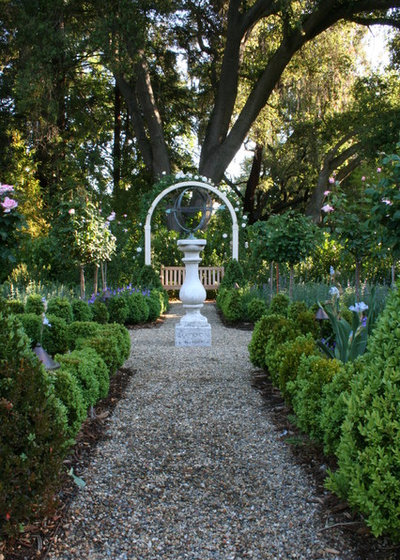
Frank & Grossman Landscape Contractors, Inc.
Create an object of desire. An arbor in the distance shelters a garden bench, but it also serves as a frame to highlight a classical sundial placed at the cross section of two intersecting pathways, transforming a once-unnoticed corner of the garden into a charming focal point.
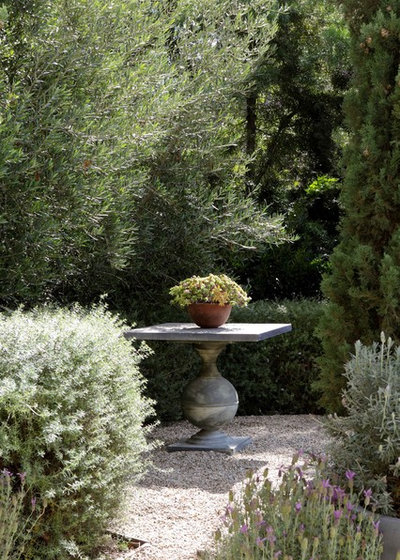
Studio William Hefner
Give prominence to an otherwise ordinary object. Note where your gaze rests as you view the garden. Emphasize the importance of that perspective by displaying an urn, a planted vessel or a small sculpture on a garden table or pedestal. The placement of a table with an elegant base gives this garden niche a heightened feeling.
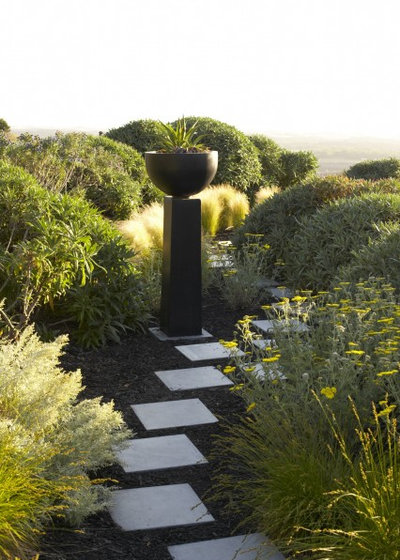
Jeffrey Gordon Smith Landscape Architecture
Go diagonal. Enhance diagonal sight lines with pathways and plantings placed at a 45-degree angle to the house. This method allows extended views through the garden while giving your landscape the illusion of being larger. Here, the diagonal stepping stone pathway has its own special point of view: a beautifully placed contemporary planter, its half-sphere bowl mirroring the mounded plant forms.
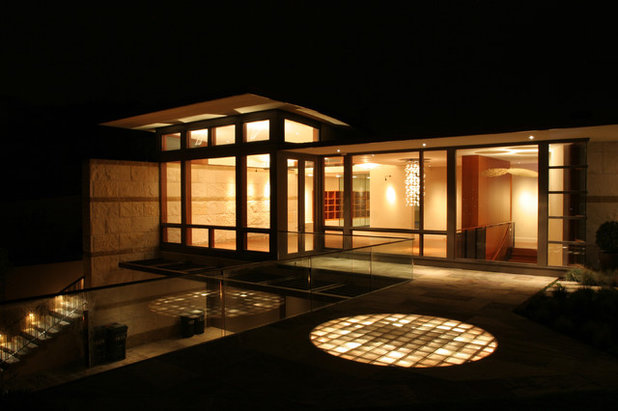
Sutton Suzuki Architects
Use light and reflections. While this home's architectural lines are undeniably appealing, the structure is all the more stunning after dark when interior and exterior lighting turn it into a glowing beacon. Light creates dramatic contrast
— thus, emphasis. Additionally, light can be reflected, which adds a touch of mystery.
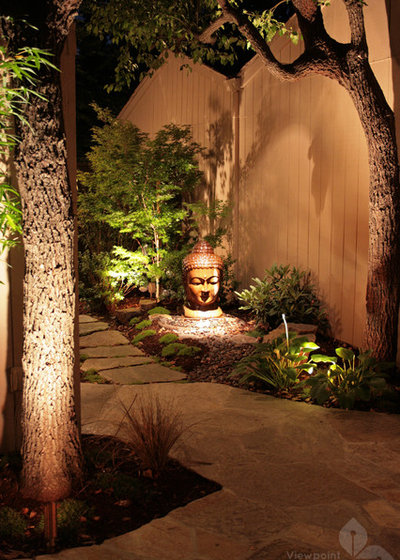
Viewpoint Lighting
Play with light. Here is another example of how light can create emphasis. Spotlighting and uplighting add glowing washes along the tree trunk and on the face of a sculpture. Garden lighting creates a magical effect that gives the garden a point of view after dark. It may take only one or two fixtures to achieve this effect.
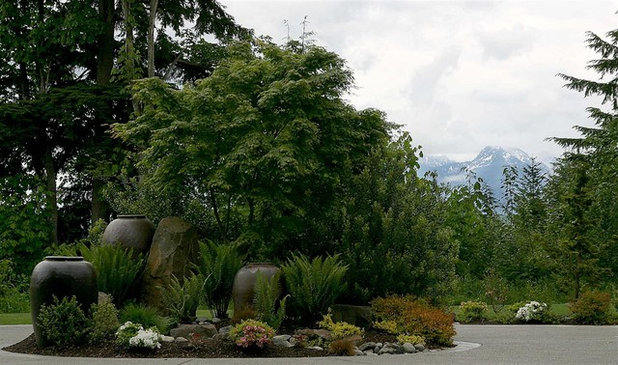
Classic Nursery & Landscape Co. / Alan Burke, asla
Highlight Mother Nature. Plant an eye-catching island on the sunrise or sunset side of your home to take advantage of the way horizontal rays at dawn or dusk backlight branches, foliage and ornamentation. This beautiful island is a focal point, with large-scale urns integrated with a specimen tree, various shrubs and ground covers. It is almost as dramatic as the snow-capped mountain range in the distance.

TerraSculpture
Use color for emphasis. The color, form and placement of a piece of art elevates it to a place of prominence in this hip rooftop garden. The glossy orange steel forms in "Tempest," by Jennifer Gilbert Asher of TerraTrellis, make a compelling connection with the Golden Gate Bridge in the distance. There's also a whimsical interplay with the row of orange-blooming kargaroo paw plants against the white structure. Brilliant, in more ways than one.
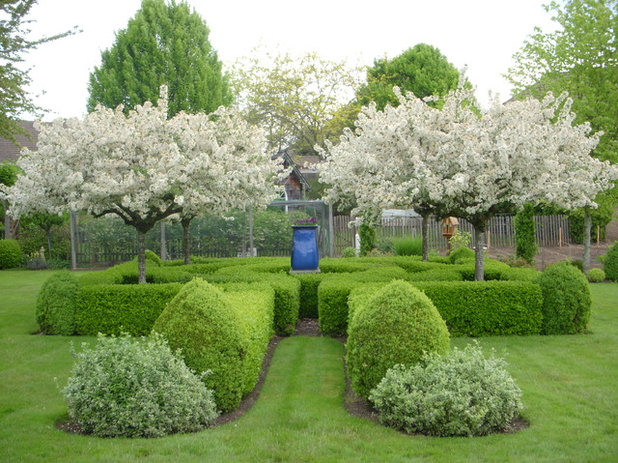 Balance the scene.
Balance the scene. Frame a view with symmetrical plantings, such as clipped hedge forms or a set of flowering crab apple trees placed in all four quadrants around a central element. This design reveals an updated approach to the traditional garden maze. Yes, it is a perfectly symmetrical garden vignette, but the blue-glazed urn downplays stuffy formality.
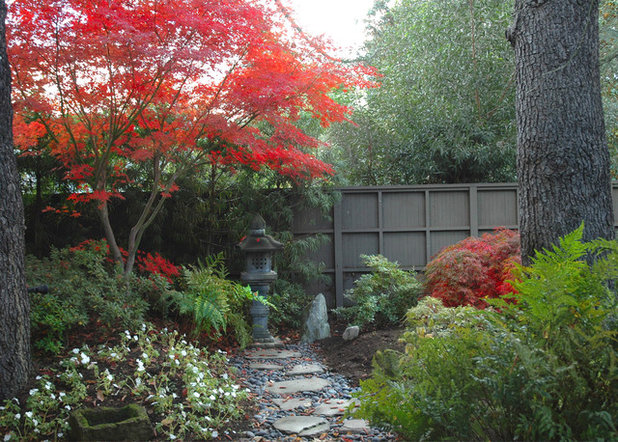
Richard Kramer
Create a portrait. A combination of architecture, horticulture and art turns what could easily have been a prosaic section of fence into an intriguing moment in the landscape. The inspired placement of an Asian stone lantern is the detail that creates emphasis and a point of view. Every other element draws the eye to this spot, from the vivid red canopy of the Japanese maple tree to the stepping-stone path.
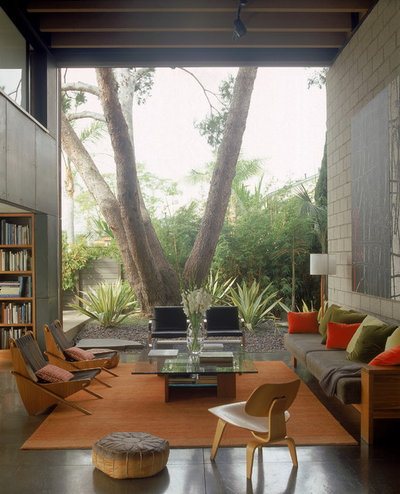 A room with a view.
A room with a view. It's natural to want a point of view when we look through a window or door, but this exceptional home is so fully integrated into the landscape that it's hard to tell where the garden ends and the interior begins. Clearly, the multitrunk tree is the focal point of this environment, and the open-air architecture is perfectly sited to exploit the vista. Wow!
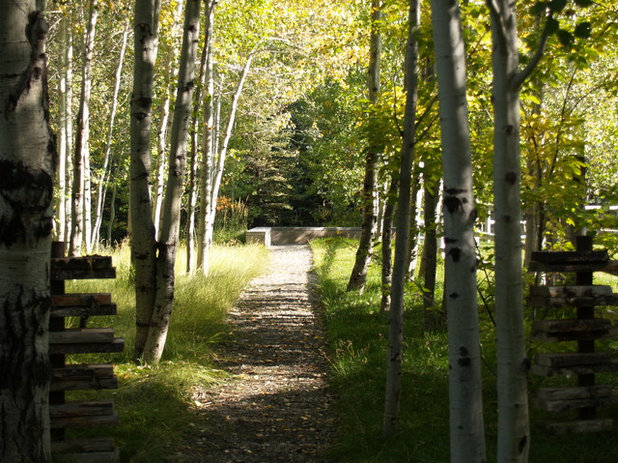
Randy Thueme Design Inc. - Landscape Architecture
Journey's end. This path leads through a stand of trees where only dappled light illuminates, and it continues toward a distant, sunnier spot in the landscape. By creating a walkway through the trees, a series of strong lines is emphasized and the low, L-shape bench becomes the natural focal point.





